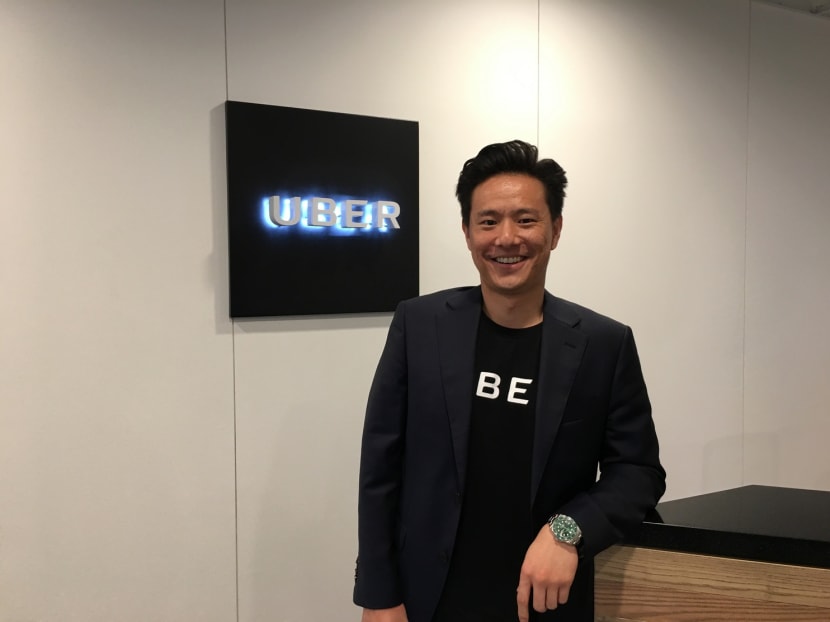Uber banking on innovation to stay ahead of the pack
SINGAPORE — As the competition stiffens in the private-hire car industry, Uber — the first to set up shop here in 2013 — plans to bank on innovation to stay ahead of its rivals, through proprietary mapping and technology to enable communication between commuters and drivers which are in the offing.
SINGAPORE — As the competition stiffens in the private-hire car industry, Uber — the first to set up shop here in 2013 — plans to bank on innovation to stay ahead of its rivals, through proprietary mapping and technology to enable communication between commuters and drivers which are in the offing.
Speaking to TODAY in an interview ahead of a party to mark the firm’s fourth anniversary, Uber Singapore general manager Warren Tseng said that the company — which has until now declined to reveal its market share — has more than a million active riders, or one in five of the Singapore population.
Mr Tseng also said the ride-hailing platform is in the midst of a mapping project to “scope out Singapore, in-house”, through cars that are sent through the country, amassing data and snapping images.
Describing mapping as essential to the experience for both riders and drivers, he said this would “significantly improve the experience” by cutting the time which drivers spend on locating riders, thereby maximising their earnings.
The firm is also devising technology that would enable commuters and drivers to communicate directly without exiting the Uber app. “That’s another big plus in terms of product and experience,” Mr Tseng said. The technology will be rolled out “soon”, said Mr Tseng, without giving more away.
He also revealed that, in line with its tenet of “being inclusive”, Uber was planning to launch a product that will enable parents to ride in Uber vehicles with their toddlers.
Its main rival Grab already runs a service for families with young children. But Mr Tseng said: “If it wasn’t better, we probably wouldn’t want to launch it.”
Mr Leigh Wong, Uber’s communications head for Singapore and Malaysia, added: “Just because something’s first, it … isn’t necessarily the best.”
On its upcoming service for young children, Mr Wong said the partner with whom Uber collaborates is important.
“They may be able to give you better and more validated safety ratings for the things that they use,” he said.
Mr Tseng acknowledged that while the competition has “finally caught up in certain regards”, the onus was on Uber to “problem-solve” and keep at its work of bringing innovations to the Singapore market.
He stressed that many of the innovations the firm had pioneered in the Republic, such as surge pricing and commercial car-pooling, have been replicated by its rivals, such as traditional taxi operators and Grab.
“(Uber) brought those things to Singapore and created that market for it,” he said.
“So when it comes to innovation, that’s what our company does: Finding innovative solutions that optimise the existing resources on the road.”
In the short term, he said the firm would “continually monitor the marketplace” to explore innovations that can improve the experience for riders and drivers.
Yesterday, Grab said its fixed-fare service JustGrab, launched last month, had cut the average waiting time for rides to 3.7 minutes, down from five minutes for the bulk of Grab’s rides previously.
When asked, Mr Tseng took a swipe at its rival, saying that Uber’s average waiting time, for the past half a year at least, has been 3.4 minutes. “Reliability has been one of our top priorities for quite some time,” he added, noting that its edge lies in its ability to provide drivers with quality vehicles through its rental arm, Lion City Rentals.
Noting that nearly half its drivers were on the road for less than 10 hours a week, Mr Tseng said the firm will work with the authorities to ensure that regulations reflect the needs of such drivers, such as flexibility.
It also wants to ensure regulators and others understand that an Uber driver is “not a taxi driver”.
“There are real-estate agents (for example) who’ve other sources of income … and they need a car to take their customers around and they want to drive … to pay for their rental,” he pointed out.









